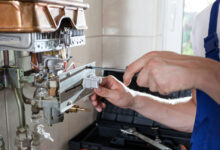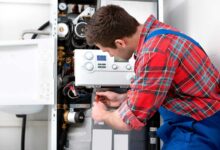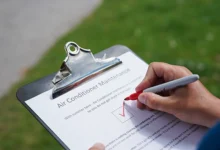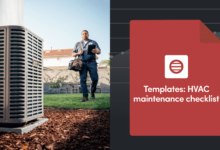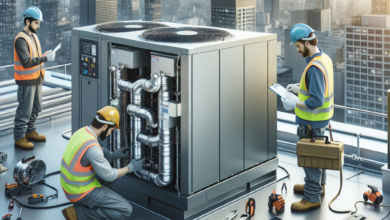HVAC Maintenance Agreement Template
HVAC Maintenance Agreement Template – When it comes to ensuring the longevity and efficiency of HVAC systems, having a well-defined maintenance agreement is crucial. This blog article aims to provide you with a unique, detailed, and comprehensive guide on HVAC maintenance agreement templates. Whether you are an HVAC contractor or a business owner seeking professional maintenance services, understanding the key elements of a maintenance agreement template is essential for successful and hassle-free HVAC system upkeep.
In this article, we will cover everything from the importance of maintenance agreements to the essential clauses that should be included in a comprehensive template. By the end of this guide, you will have a thorough understanding of how to create a maintenance agreement that protects both parties, ensures regular maintenance, and reduces the risk of unexpected breakdowns and costly repairs.
Understanding the Importance of HVAC Maintenance Agreements
Regular HVAC maintenance is vital for ensuring optimal performance, energy efficiency, and an extended lifespan of your HVAC system. By implementing a maintenance agreement, both the HVAC contractor and the client can establish clear expectations and responsibilities.
A well-maintained HVAC system not only saves energy but also reduces utility costs. It helps prevent major breakdowns and expensive repairs by identifying potential issues before they escalate. Additionally, routine maintenance improves indoor air quality, ensuring a healthier and more comfortable environment for building occupants.
By having a maintenance agreement in place, both parties are committed to adhering to a regular maintenance schedule. This proactive approach minimizes the risk of system failure, enhances the system’s performance, and extends its overall lifespan. It also provides peace of mind to the client, knowing that their HVAC system is being properly cared for by professionals.
The Cost-Saving Benefits of Regular Maintenance
Regular HVAC maintenance offers significant cost-saving benefits in the long run. By conducting regular inspections, cleaning, and lubrication, potential issues can be identified and addressed promptly, preventing them from escalating into major problems that require costly repairs or even system replacement.
Furthermore, a well-maintained HVAC system operates more efficiently, resulting in lower energy consumption and reduced utility bills. Regular maintenance ensures that the system is running optimally, minimizing energy waste and maximizing performance. This not only saves money but also reduces the environmental impact associated with excessive energy consumption.
Moreover, preventive maintenance helps extend the lifespan of HVAC equipment. By addressing minor issues before they become major problems, the system components remain in good condition, reducing the need for premature replacements. This translates into significant cost savings for the client in terms of equipment longevity and delayed capital expenditures.
Key Elements of an Effective HVAC Maintenance Agreement
An effective HVAC maintenance agreement should include several key elements to ensure clarity and accountability. By understanding and incorporating these elements into the agreement template, both the contractor and the client can establish a mutually beneficial and well-structured partnership.
Scope of Work
The scope of work section outlines the specific tasks and services included in the maintenance agreement. It should clearly define the responsibilities of the HVAC contractor, such as regular inspections, filter replacements, cleaning, lubrication, and system performance evaluations. The scope of work should also specify any additional services that may be required for specific HVAC systems, such as coil cleaning or refrigerant level checks.
Frequency of Visits
Determining the frequency of visits is essential to ensure that regular maintenance is conducted at appropriate intervals. This section should specify the number of visits per year, quarterly, or monthly, depending on the needs of the HVAC system and the client’s preferences. The frequency should take into account the system’s age, complexity, and usage patterns, ensuring adequate maintenance without being excessive.
Responsibilities of Both Parties
Clearly defining the responsibilities of both the HVAC contractor and the client is crucial for setting expectations and avoiding misunderstandings. The contractor’s responsibilities typically include conducting maintenance tasks, providing necessary documentation, and promptly addressing any issues or concerns raised by the client. On the other hand, the client’s responsibilities may include granting access to the HVAC equipment, reporting any system abnormalities, and ensuring a suitable working environment for the contractor.
Pricing Structure
The pricing structure section outlines the financial aspects of the maintenance agreement. It should specify the cost of the agreement, whether it is a fixed fee or a tiered pricing structure based on system complexity. Additionally, any potential additional charges, such as emergency repairs or replacement parts, should be clearly outlined. The pricing structure should be transparent and fair, ensuring that both parties understand the financial obligations involved.
Termination Clauses
Including termination clauses in the maintenance agreement is essential for addressing situations where either party wants to terminate the contract prematurely. This section should outline the notice period required for termination and the terms under which termination can occur. It should also specify any penalties or fees associated with early termination to protect the interests of both parties and ensure a smooth transition.
Tailoring the Maintenance Agreement to Specific HVAC Systems
HVAC systems can vary significantly in terms of design, capacity, and complexity. Therefore, it is crucial to tailor the maintenance agreement to meet the specific requirements of the HVAC system being serviced. Whether it is a residential, commercial, or industrial system, understanding and addressing the unique considerations for each system type is essential.
Residential HVAC Systems
Residential HVAC systems typically require regular maintenance to ensure optimal performance and energy efficiency. The maintenance agreement for residential systems should focus on tasks such as filter replacements, coil cleaning, lubrication, and system performance evaluations. It should also address any specific requirements based on the type of HVAC system, such as split systems, heat pumps, or ductless mini-splits.
Commercial HVAC Systems
Commercial HVAC systems are often more complex and serve larger spaces, requiring specialized maintenance. The maintenance agreement for commercial systems should include tasks such as fan belt replacements, motor lubrication, refrigerant level checks, and cleaning of air handling units. It should also consider the specific needs of different zones within the commercial space, ensuring comprehensive maintenance for all areas.
Industrial HVAC Systems
Industrial HVAC systems are typically more robust and serve demanding environments. The maintenance agreement for industrial systems should address tasks specific to these systems, such as checking combustion chambers, inspecting heat exchangers, monitoring control systems, and conducting performance tests. It should also consider any industry-specific regulations and compliance requirements.
Pricing Structures for HVAC Maintenance Agreements
Choosing the most suitable pricing structure for your HVAC maintenance agreement depends on various factors, such as the size and complexity of the system, the expected maintenance tasks, and the client’s budget. Understanding the different pricing structures available can help you tailor the agreement to meet the needs of both parties.
Flat Fee Pricing
A flat fee pricing structure involves charging a fixed amount for the maintenance services provided throughout the agreement’s duration. This pricing structure is simple, transparent, and ensures predictable costs for the client. It is often suitable for smaller residential systems or basic maintenance tasks. However, it may not be ideal for more complex systems or those requiring additional services.
Tiered Pricing
Tiered pricing structures involve categorizing HVAC systems based on their complexity or size and assigning different pricing tiers accordingly. This approach allows for more flexibility, ensuring that the pricing aligns with the level of effort required for each system. Tiered pricing is often used for commercial or industrial HVAC systems, where maintenance tasks may vary significantly based on the size and complexity of the equipment.
Performance-Based Contracts
In performance-based contracts, the pricing is determined based on the system’s performance metrics, such as energy efficiency or air quality. This approach incentivizes the HVAC contractor to ensure optimal system performance and energy efficiency. Performance-based contracts are more common in commercial or industrial settings, where energy savings and environmental considerations play a significant role.
Responsibilities of the HVAC Contractor
As an HVAC contractor, it is essential to understand and fulfill your responsibilities outlined in the maintenance agreement. By doing so, you can ensure that the HVAC system receives the necessary care and attention it requires for optimal performance and longevity.
Regular Inspections and Maintenance Tasks
One of the primary responsibilities of an HVAC contractor is to conduct regular inspections to identify any potential issues or areas that require maintenance. This includes inspecting components such as filters, coils, fans, motors, and electrical connections. It also involves performing necessary maintenance tasks such as cleaning, lubrication, and replacing filters or worn-out parts.
Ensuring Compliance with Manufacturer’s Recommendations
Following the manufacturer’s recommended maintenance guidelines is crucial to maintain the system’s warranty and ensure its optimum performance. As an HVAC contractor, it is your responsibility to be familiar with these guidelines and ensure that the maintenance tasks performed align with the manufacturer’s recommendations. This includes using the correct lubricants, filters, and replacement parts specified by the manufacturer.
Promptly Addressing System Abnormalities
If the client reports any system abnormalities or concerns, it is your responsibility as an HVAC contractor to promptly address and resolve these issues. This may involve troubleshooting the problem, conducting additional inspections, and performing necessary repairs or adjustments. Effective communication with the client is essential to ensure that any arising issues are addressed in a timely manner.
Providing Documentation and Reports
Documenting the maintenance tasks performed and providing reports to the client is an essential partof the HVAC contractor’s responsibilities. This documentation serves as proof of the maintenance services rendered and helps track the system’s performance over time. It should include details such as the date of the visit, tasks performed, any issues identified, and recommendations for future maintenance or repairs. Providing clear and concise reports helps keep the client informed about the status of their HVAC system and demonstrates the contractor’s professionalism and attention to detail.
Offering Expert Advice and Recommendations
As an HVAC contractor, you are expected to provide expert advice and recommendations to the client regarding their HVAC system. This includes informing them about any potential upgrades or improvements that can enhance the system’s performance, energy efficiency, or indoor air quality. Offering proactive suggestions demonstrates your industry knowledge and commitment to helping the client make informed decisions about their HVAC system.
Responsibilities of the Client or Business Owner
While the HVAC contractor bears the primary responsibility for maintaining the HVAC system, the client or business owner also has an important role to play in ensuring the system’s proper upkeep and functionality.
Granting Access to the HVAC Equipment
To enable the HVAC contractor to perform their maintenance tasks effectively, it is crucial for the client or business owner to provide access to the HVAC equipment. This includes ensuring that the contractor can access all necessary components, such as air handlers, condensers, or mechanical rooms. Clearing any obstructions and providing keys or access codes as required facilitates smooth maintenance visits and ensures that all aspects of the system can be properly inspected and serviced.
Promptly Reporting System Abnormalities
The client or business owner should promptly report any system abnormalities or concerns to the HVAC contractor. This includes issues such as unusual noises, strange odors, inconsistent temperatures, or any other signs that indicate a potential problem with the HVAC system. Timely reporting allows the contractor to investigate and address the issue before it worsens, minimizing the risk of system failure or costly repairs. Open and effective communication is key in maintaining a healthy HVAC system.
Adhering to Recommended Maintenance Schedules
Following the recommended maintenance schedule provided by the HVAC contractor is crucial for the proper upkeep of the HVAC system. This includes adhering to regular maintenance visits and not skipping or postponing scheduled appointments. Consistent maintenance ensures that the system receives the necessary care and attention it needs to perform optimally and reduces the risk of unexpected breakdowns. The client or business owner should prioritize the maintenance of their HVAC system and understand the importance of regular upkeep for its long-term functionality.
Providing a Suitable Working Environment for the Contractor
Creating a suitable working environment for the HVAC contractor is essential for ensuring safe and efficient maintenance visits. This includes providing a clean and well-lit workspace, ensuring proper ventilation, and maintaining a clutter-free environment around the HVAC equipment. A suitable working environment not only facilitates the contractor’s tasks but also minimizes any potential safety hazards or disruptions that could arise during maintenance visits.
Termination and Renewal of Maintenance Agreements
Termination and renewal clauses are vital components of a maintenance agreement, providing both parties with a clear understanding of the terms under which the contract can be terminated or renewed.
Notice Period for Termination
The termination section of the maintenance agreement should specify the notice period required if either party wishes to terminate the contract. This allows both the HVAC contractor and the client to plan accordingly and make any necessary arrangements. The notice period may vary depending on the duration of the agreement, typically ranging from 30 to 90 days. Clearly defining the notice period helps ensure a smooth transition and avoids any potential conflicts or misunderstandings.
Automatic Renewal Clauses
Automatic renewal clauses are provisions that specify whether the maintenance agreement will automatically renew at the end of the agreed-upon term. If automatic renewal is included, the agreement should clearly outline the conditions under which it will occur and any adjustments to pricing or terms that may apply. This section ensures that both parties are aware of the automatic renewal provision and can make informed decisions regarding the future of the maintenance agreement.
Considerations when Terminating Contracts
When terminating a maintenance agreement, both parties should consider certain factors to ensure a smooth and amicable termination process. This may include conducting a final maintenance visit to ensure that the HVAC system is in good working condition, settling any outstanding payments or fees, and finalizing any documentation or reports. Open communication and cooperation during the termination process help maintain a positive professional relationship and pave the way for potential future collaborations.
Legal Considerations and Dispute Resolution
Addressing legal considerations and dispute resolution methods in the maintenance agreement helps protect the interests of both the HVAC contractor and the client.
Liability Limitations
Liability limitations protect both parties from excessive financial or legal risks. This section of the agreement should clearly outline the extent to which the HVAC contractor can be held liable for damages or losses arising from the maintenance services provided. It is essential to consult with legal professionals to ensure that the liability limitations are fair and enforceable within the applicable legal framework.
Indemnification Clauses
Indemnification clauses specify the responsibility of each party for any claims, damages, or losses incurred during the maintenance agreement. This section should outline the obligations of the HVAC contractor and the client to indemnify and hold harmless each other from any liability arising from their respective actions or omissions during the agreement. Indemnification clauses provide a clear understanding of the parties’ responsibilities and protect them from potential legal disputes.
Dispute Resolution Methods
Including dispute resolution methods in the maintenance agreement helps mitigate conflicts and provides a framework for resolving any disagreements that may arise. Common dispute resolution methods include negotiation, mediation, or arbitration. Clearly outlining the preferred method of dispute resolution and the steps involved in the process ensures that both parties are aware of the mechanisms available for resolving disputes in an efficient and fair manner.
Benefits of Regular HVAC Maintenance
Regular HVAC maintenance offers numerous benefits that go beyond just ensuring the system’s functionality. Understanding and communicating these benefits to clients can help emphasize the importance of regular maintenance and encourage them to prioritize HVAC system upkeep.
Improved Energy Efficiency
Regular maintenance helps keep the HVAC system operating at peak efficiency, reducing energy waste and lowering utility costs. Well-maintained systems require less energy to achieve the desired indoor comfort levels, resulting in significant energy savings over time. Emphasizing the potential energy savings can be a compelling selling point for clients, as it directly impacts their bottom line.
Enhanced Indoor Air Quality
Regular maintenance includes cleaning and replacing filters, which helps improve indoor air quality by reducing airborne pollutants, allergens, and dust particles. This is especially important for clients concerned about providing a healthy and comfortable environment for building occupants. Highlighting the positive impact on indoor air quality can be particularly compelling for residential, healthcare, or hospitality clients.
Reduced System Downtime
By proactively addressing potential issues before they escalate, regular maintenance helps minimize system downtime. Preventive maintenance can help identify and resolve minor problems during scheduled visits, reducing the risk of unexpected breakdowns and the associated disruptions to daily operations. Stressing the importance of minimizing system downtime can resonate with clients who rely heavily on their HVAC systems for their business operations.
Extended Equipment Lifespan
Regular maintenance significantly extends the lifespan of HVAC equipment. By addressing wear and tear, lubricating moving parts, and ensuring proper system operation, maintenance tasks help prevent premature equipment failures and the need for costly replacements. Emphasizing the potential for a longer equipment lifespan can be a compelling selling point, particularly for clients looking to maximize their return on investment.
Cost Savings in the Long Run
Regular HVAC maintenance offers significant cost savings over time. By preventing major breakdowns, reducing energy consumption, and extending equipment lifespans, clients can avoid costly repairs, premature replacements, and excessive utility bills. Demonstrating the potential cost savings associated with regular maintenance can help clients understand the long-term financial benefits and justify the investment in a maintenance agreement.
Going the Extra Mile: Additional Services and Add-Ons
While the core maintenance tasks outlined in the maintenance agreement are essential, providing additional services and add-ons can further enhance the value and satisfaction for the client. These extra offerings can differentiate your services from competitors and strengthen the client-contractor relationship.
Priority Response Times
Offering priority response times for maintenance agreement clients demonstrates your commitment to providing prompt and reliable service. This can be particularly important for clients who operate in critical environments or industries where system downtime can have significant consequences. Guaranteeing expedited response times for maintenance agreement clients can provide peace of mind and minimize disruptions to their operations.
Discounted Repair Services
Providing discounted repair services to maintenance agreement clients can be an attractive incentive. This encourages clients to address any identified issues promptly and discourages them from seeking repair services from other contractors. Offering discounted repair rates demonstrates your commitment to long-term customer satisfaction and can help build trust and loyalty with your clients.
Equipment Upgrade Options
As an HVAC contractor, you have insights into the latest advancements in HVAC technology. Offering equipment upgrade options to maintenance agreement clients enables them to stay ahead of the curve and benefit from improved energy efficiency, enhanced performance, or advanced features. Providing recommendations for equipment upgradesbased on the client’s specific needs and goals can add value to the maintenance agreement and foster a proactive approach to system optimization.
Remote Monitoring Features
Remote monitoring features allow for real-time monitoring and analysis of HVAC system performance. By incorporating remote monitoring capabilities into the maintenance agreement, you can proactively identify potential issues, track energy usage trends, and optimize system settings from a remote location. This level of proactive monitoring can help prevent system failures, improve energy efficiency, and provide valuable insights to clients about their HVAC system’s performance.
Energy Audits and Efficiency Assessments
Offering energy audits and efficiency assessments as part of the maintenance agreement can help clients identify areas for improvement and implement energy-saving strategies. Conducting a comprehensive energy audit involves analyzing the system’s energy usage, identifying inefficiencies, and recommending appropriate solutions to optimize energy efficiency. Providing energy audit services demonstrates your commitment to sustainability and can result in long-term energy cost savings for your clients.
Training and Education Programs
Providing training and education programs for maintenance agreement clients can empower them to better understand and maintain their HVAC systems. These programs can include workshops, webinars, or on-site training sessions that cover topics such as system operation, basic troubleshooting, and preventive maintenance practices. By equipping clients with the knowledge and skills to perform simple tasks and identify potential issues, you foster a sense of partnership and empower them to take an active role in the care of their HVAC system.
Equipment Performance Reports and Trend Analysis
Generating equipment performance reports and conducting trend analysis helps clients track their HVAC system’s performance over time. These reports provide valuable insights into energy usage patterns, system efficiency, and potential areas for improvement. By sharing these reports with maintenance agreement clients, you demonstrate your commitment to transparency and help them make informed decisions about system optimization and future investments.
In conclusion, an HVAC maintenance agreement is a vital tool for ensuring the optimal performance, longevity, and cost-effectiveness of HVAC systems. By incorporating the key elements discussed in this comprehensive guide, such as clearly defining the scope of work, determining the pricing structure, and addressing legal considerations, you can create a detailed and comprehensive maintenance agreement template. Tailoring the agreement to specific HVAC systems, emphasizing the benefits of regular maintenance, and providing additional services and add-ons further enhance the value and satisfaction for clients. Regular HVAC maintenance is an investment that pays off in the long run, and a well-crafted maintenance agreement sets the foundation for a successful partnership in maintaining efficient HVAC systems.
